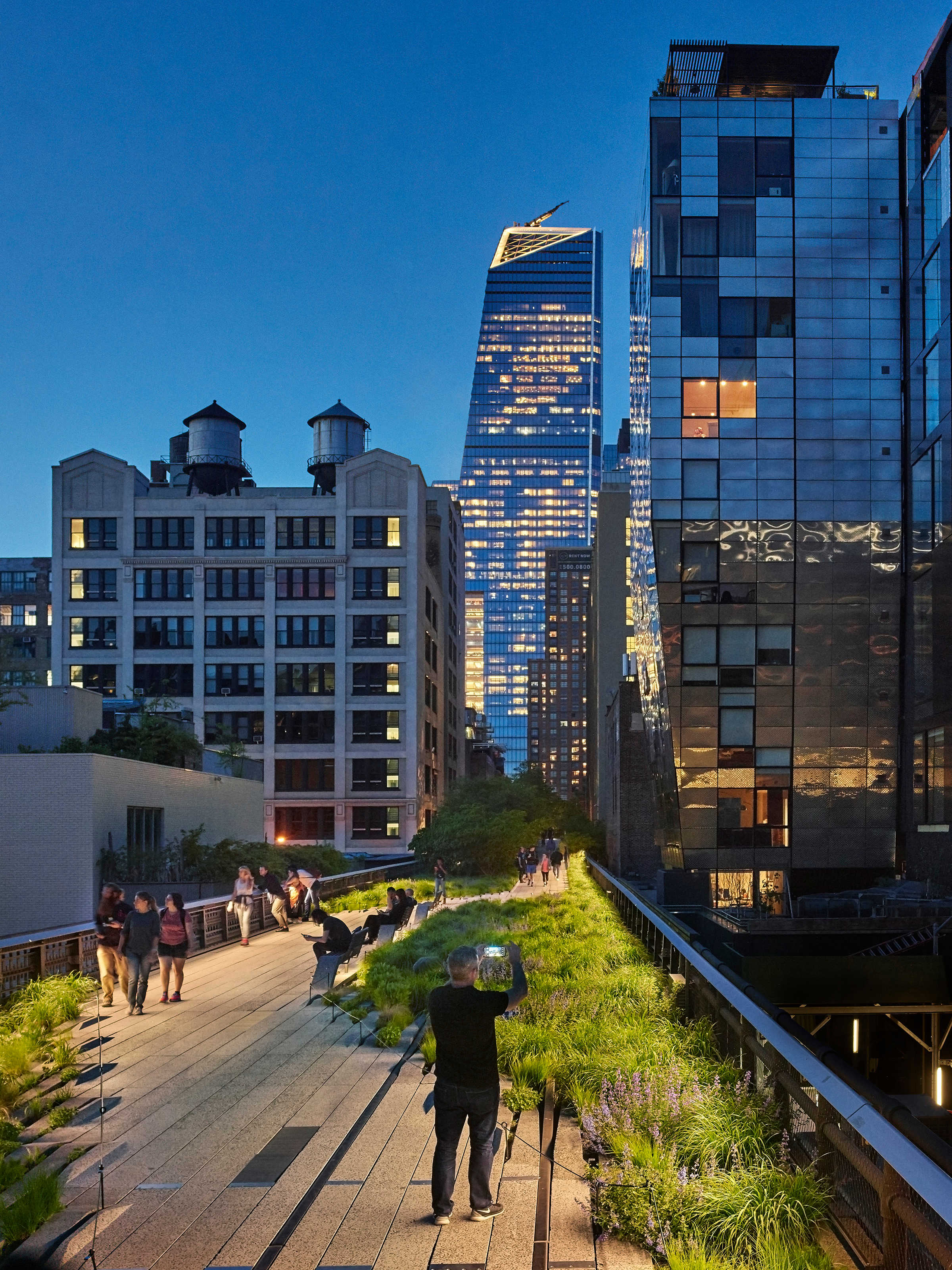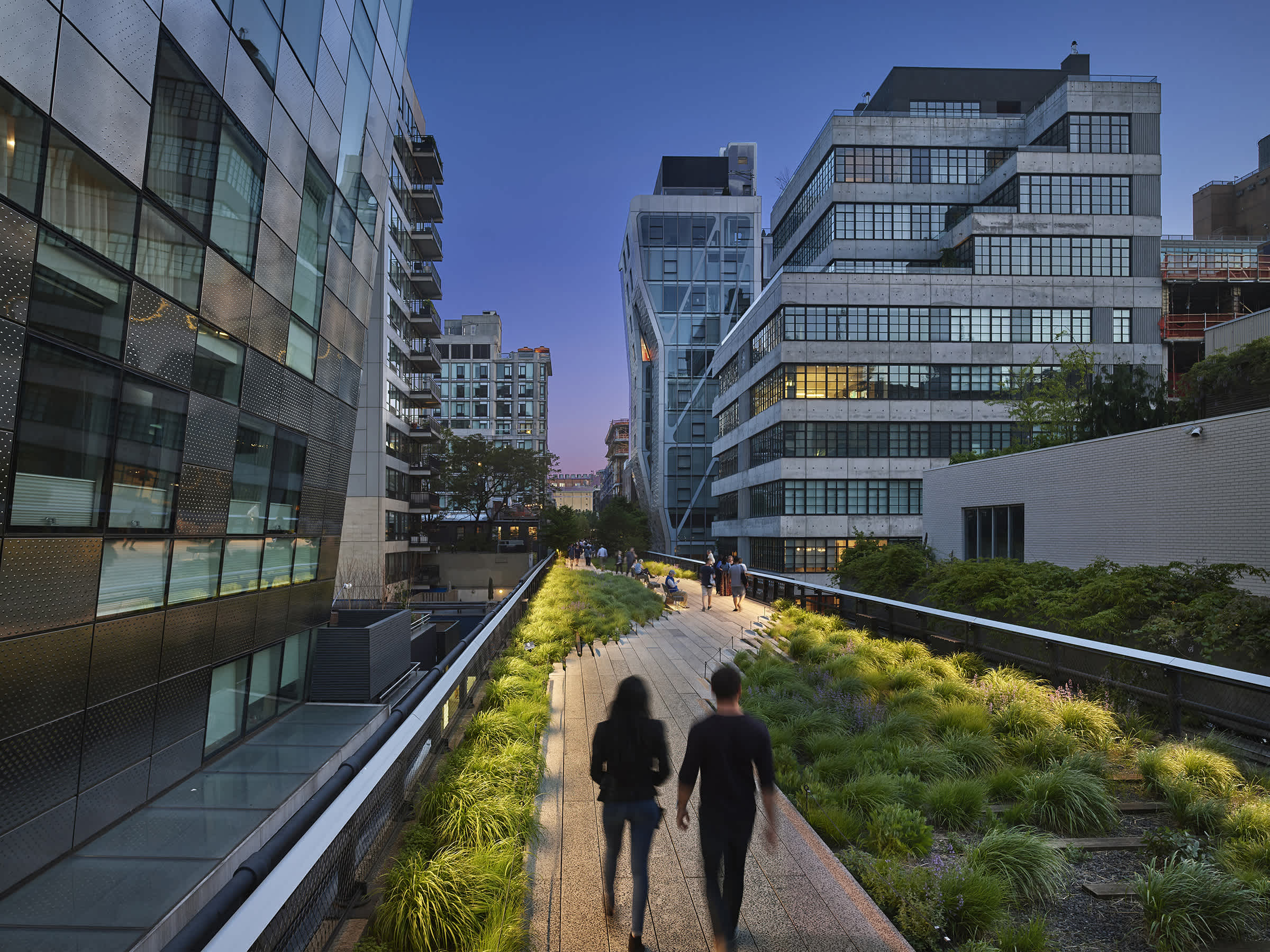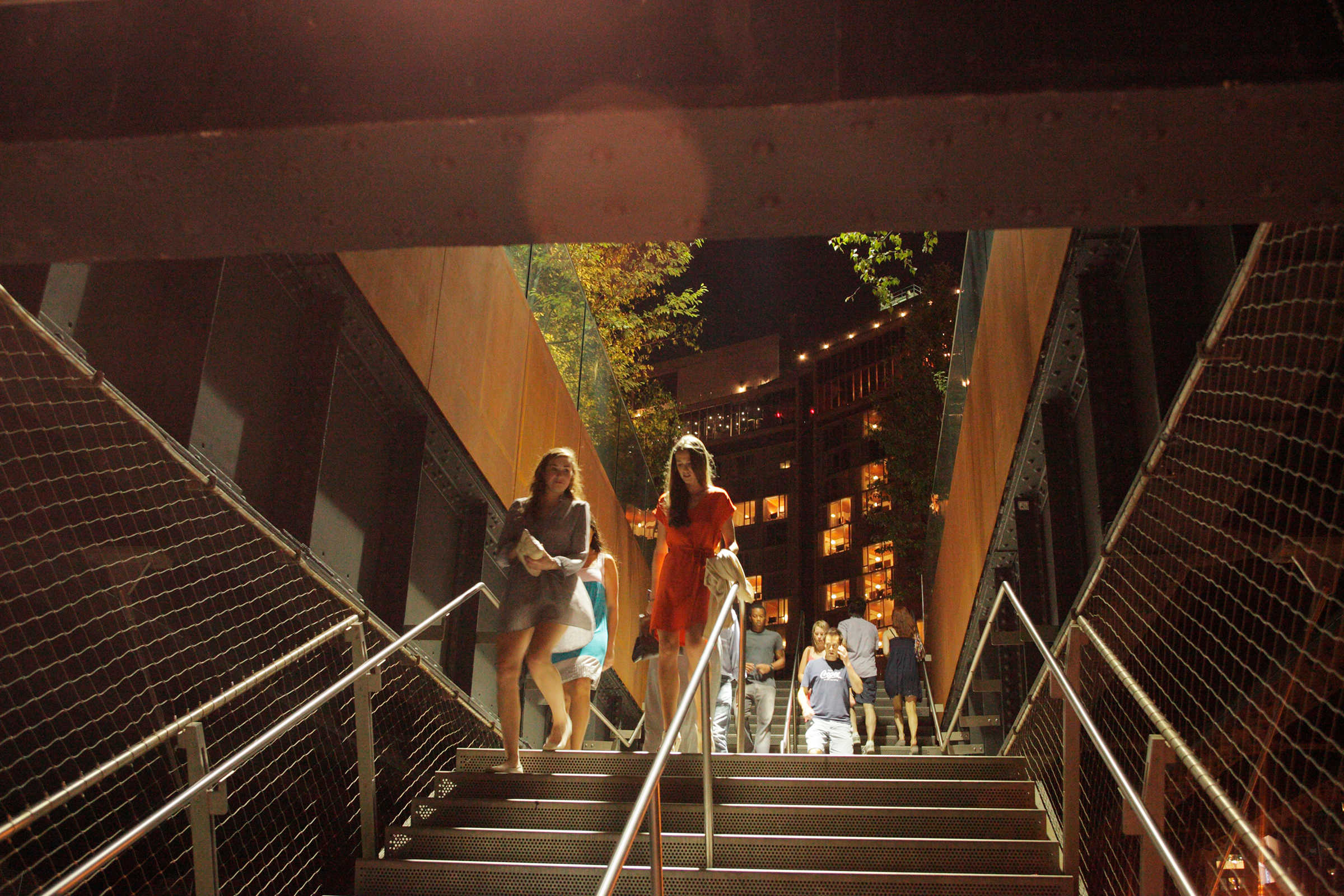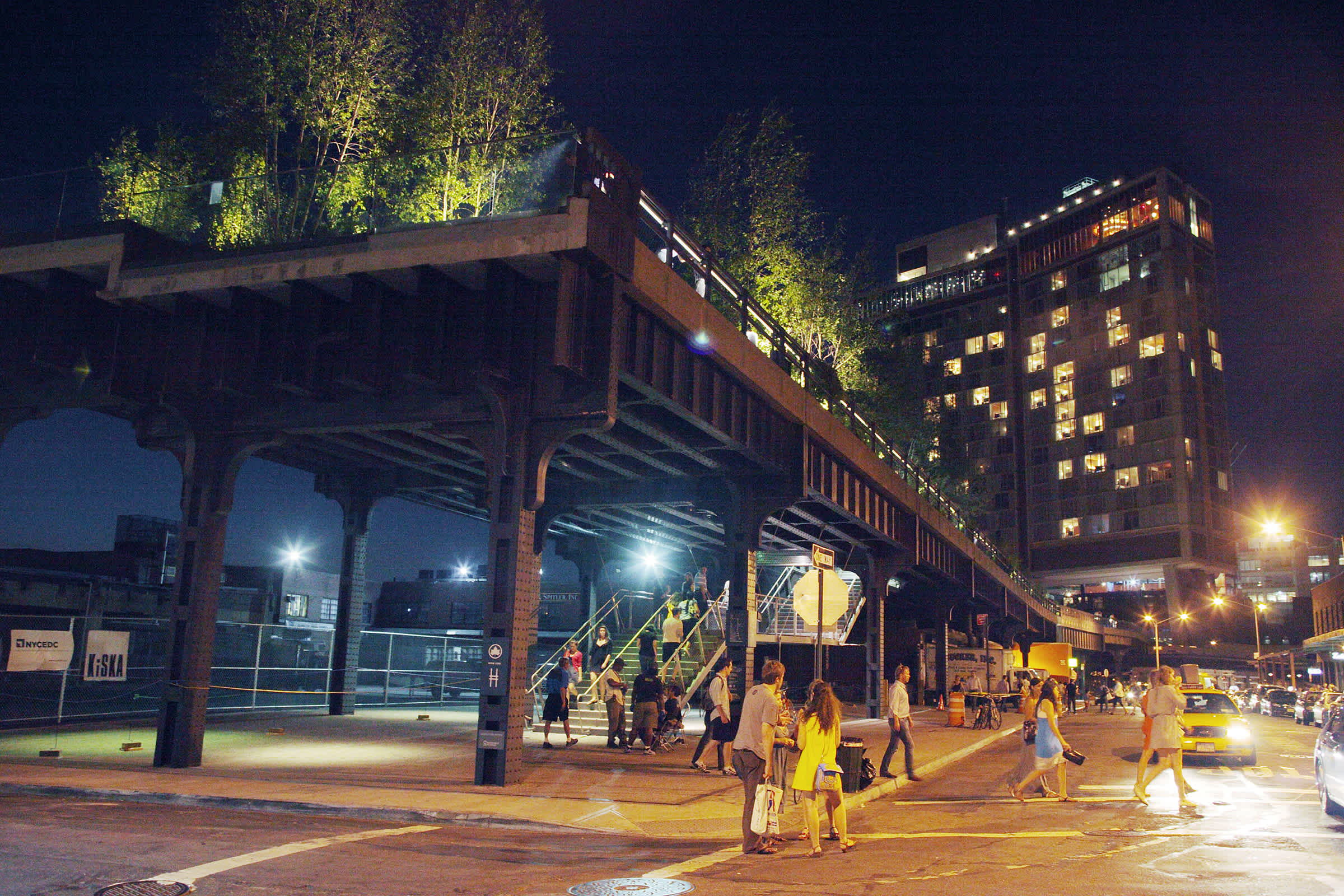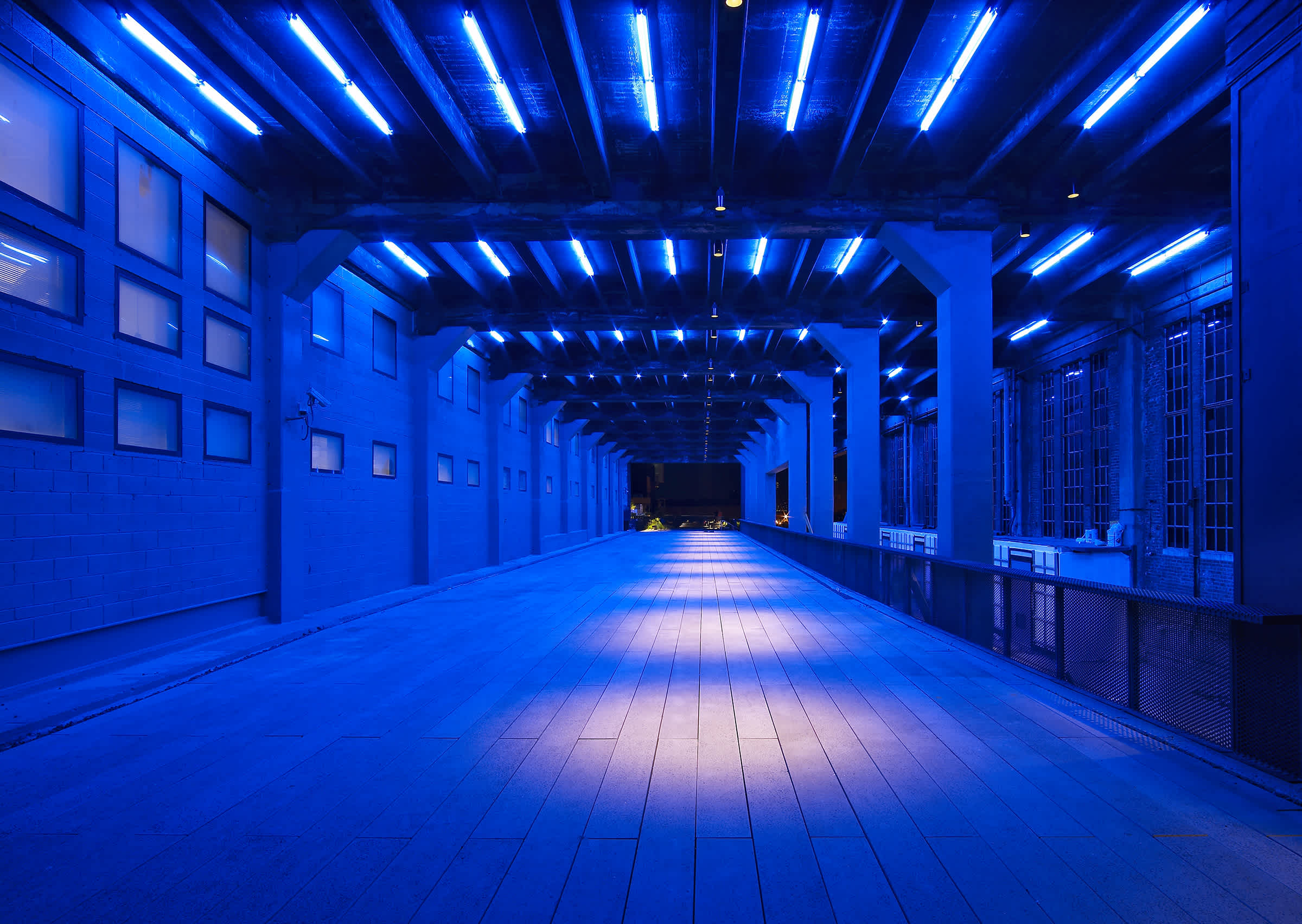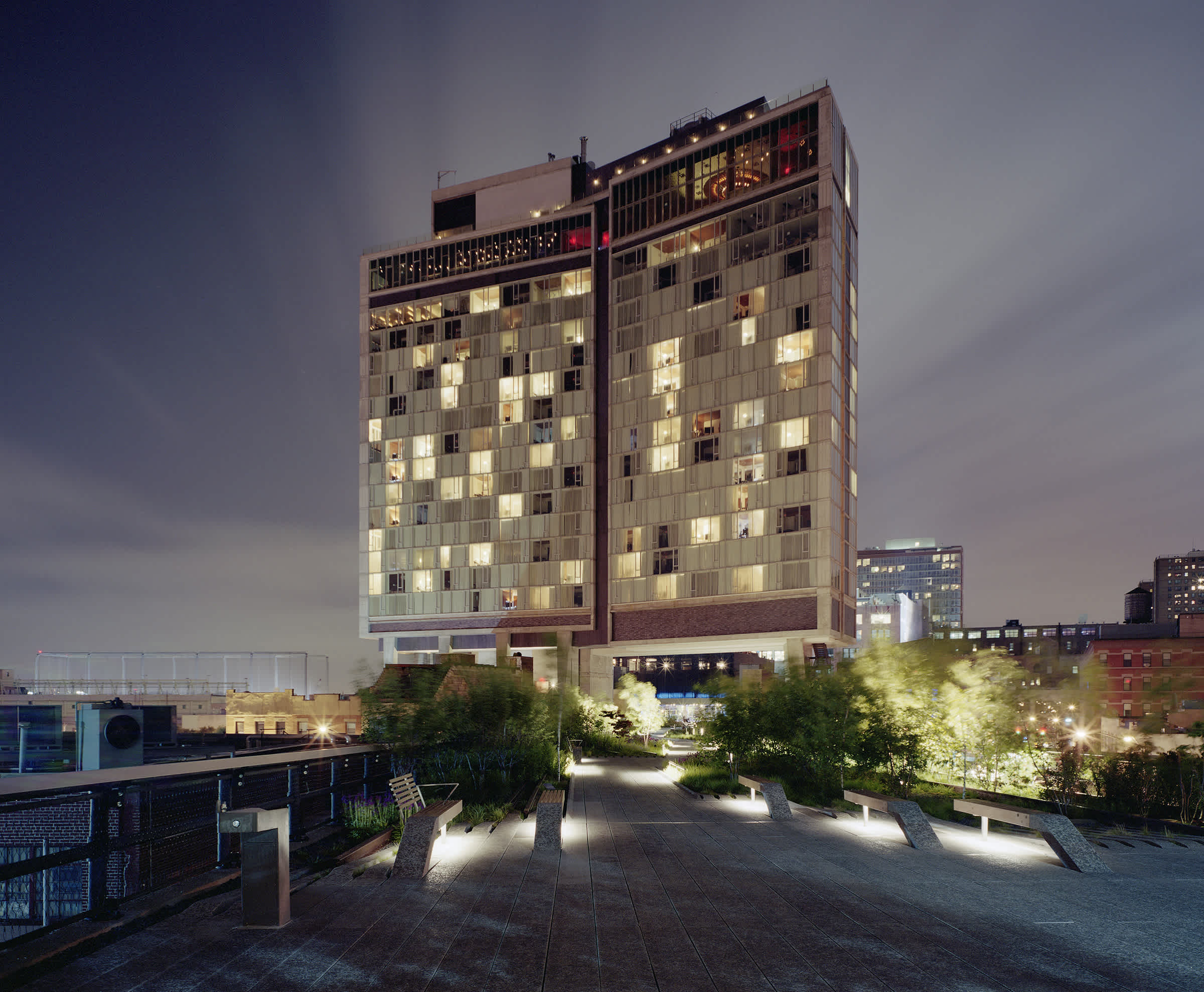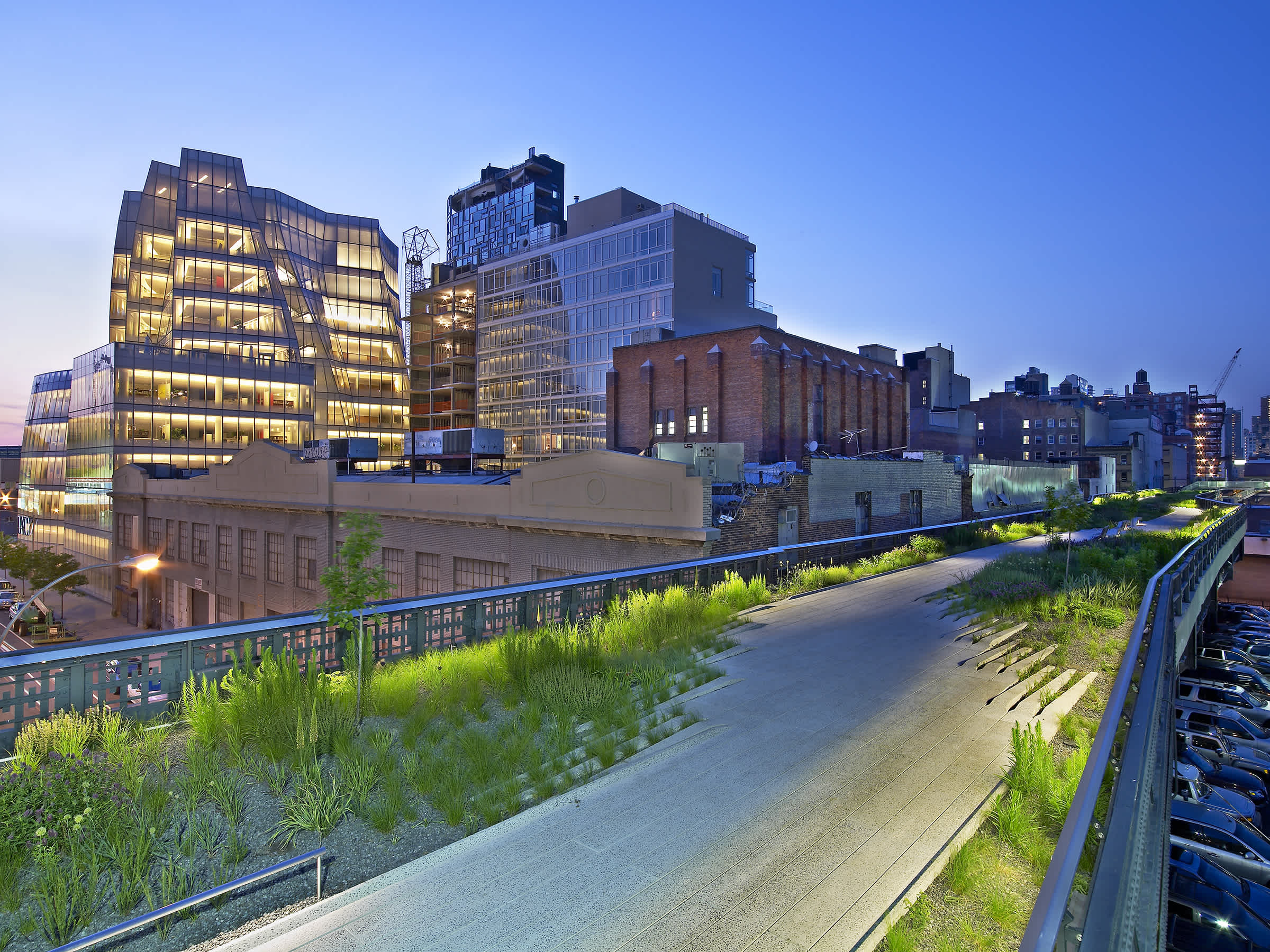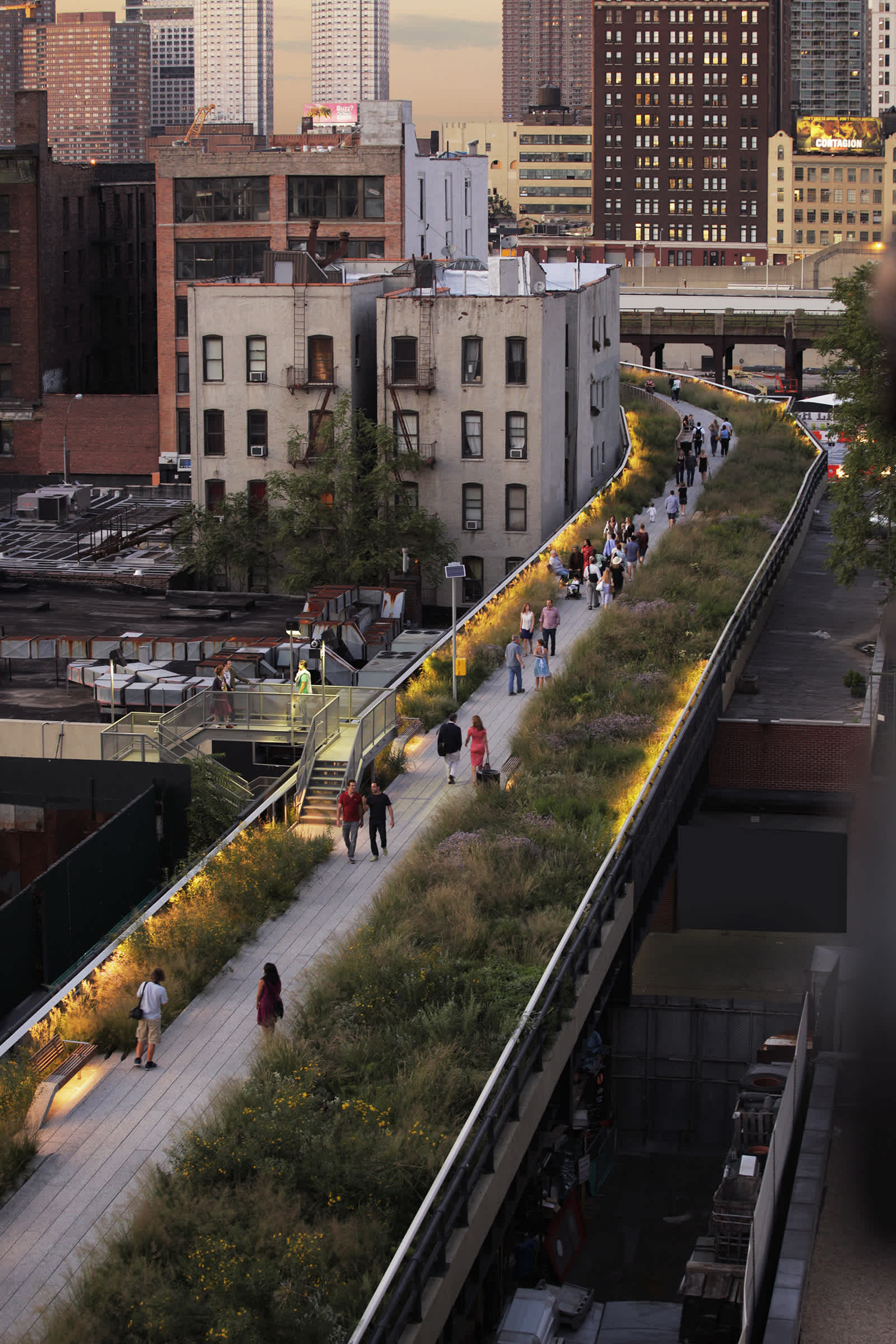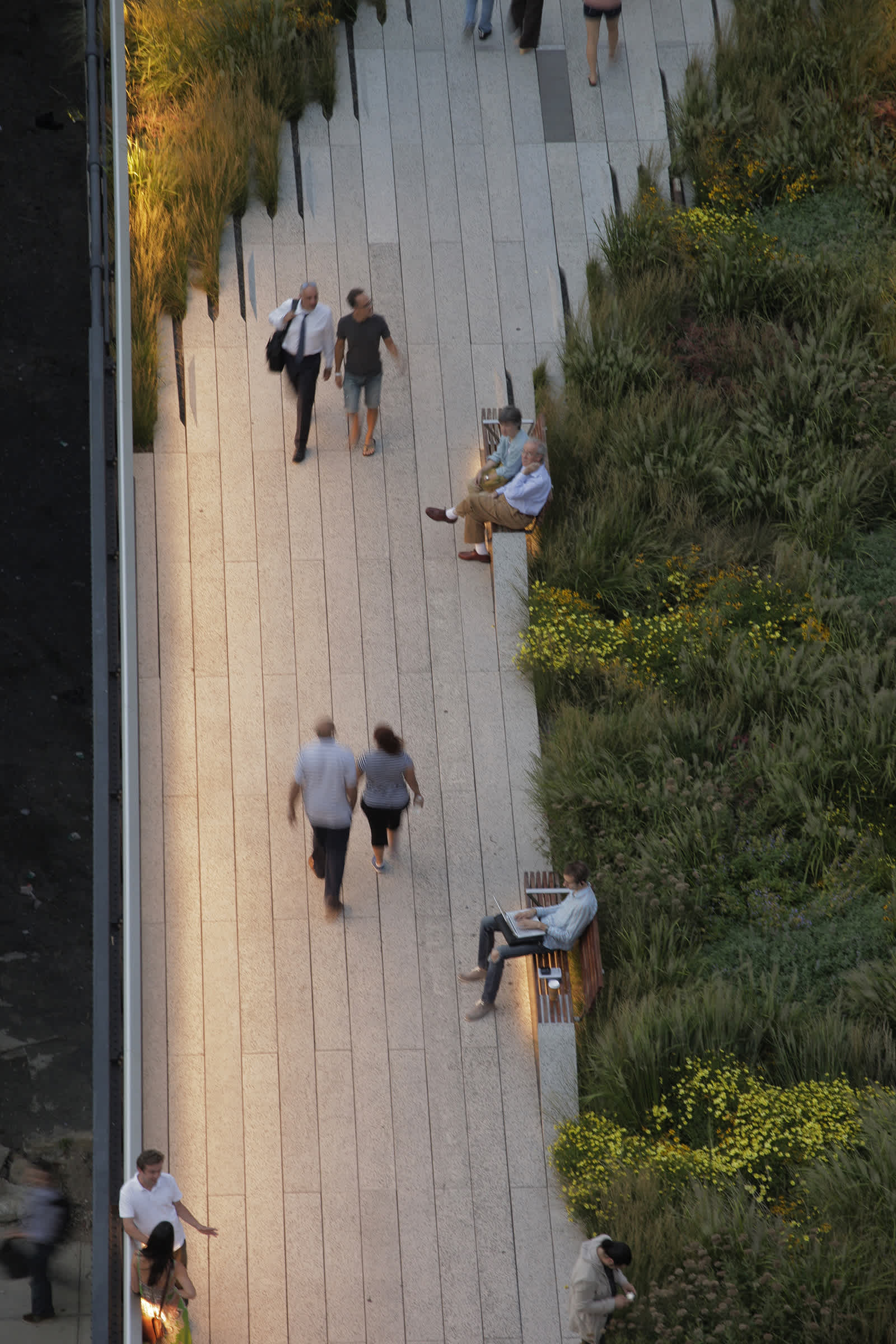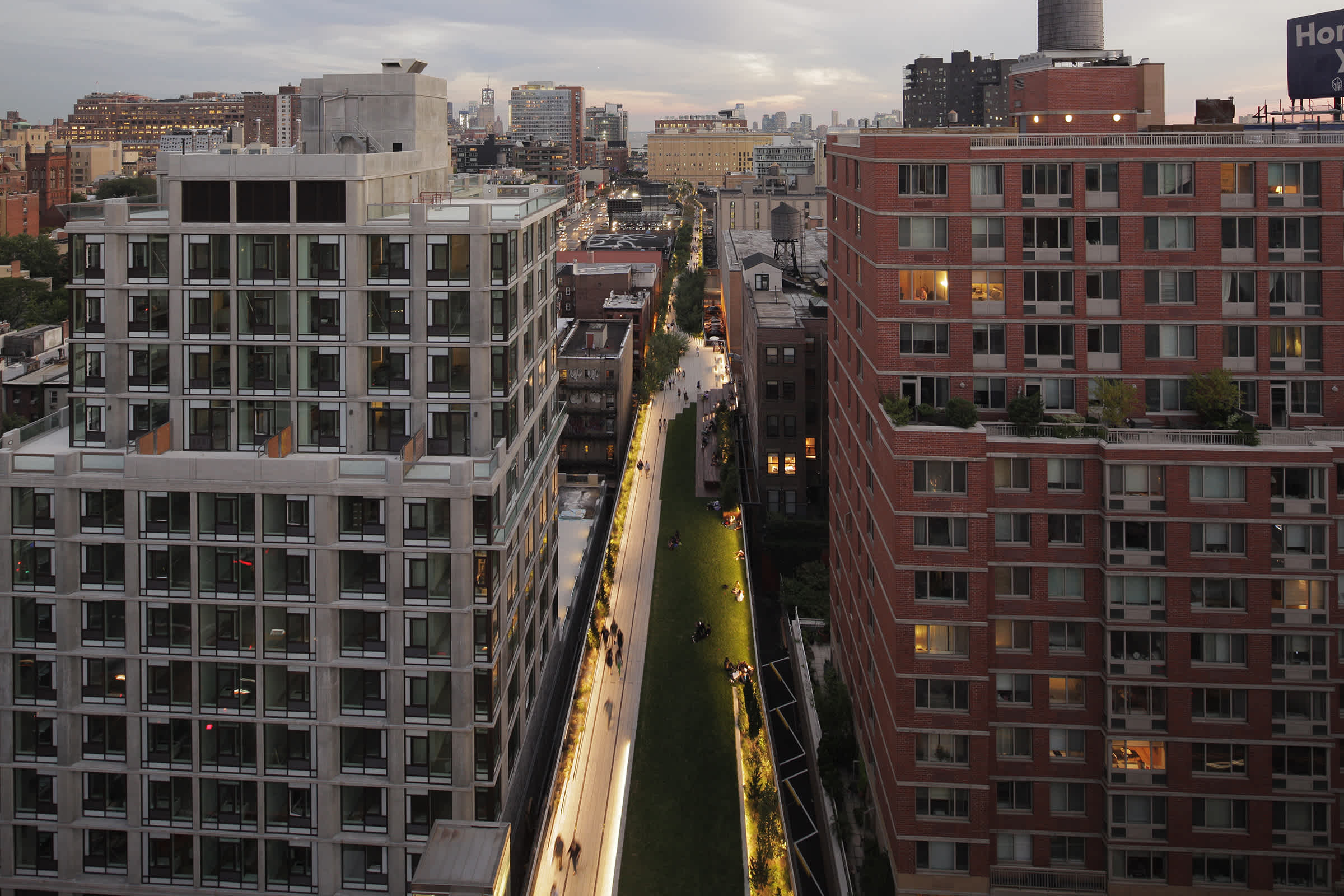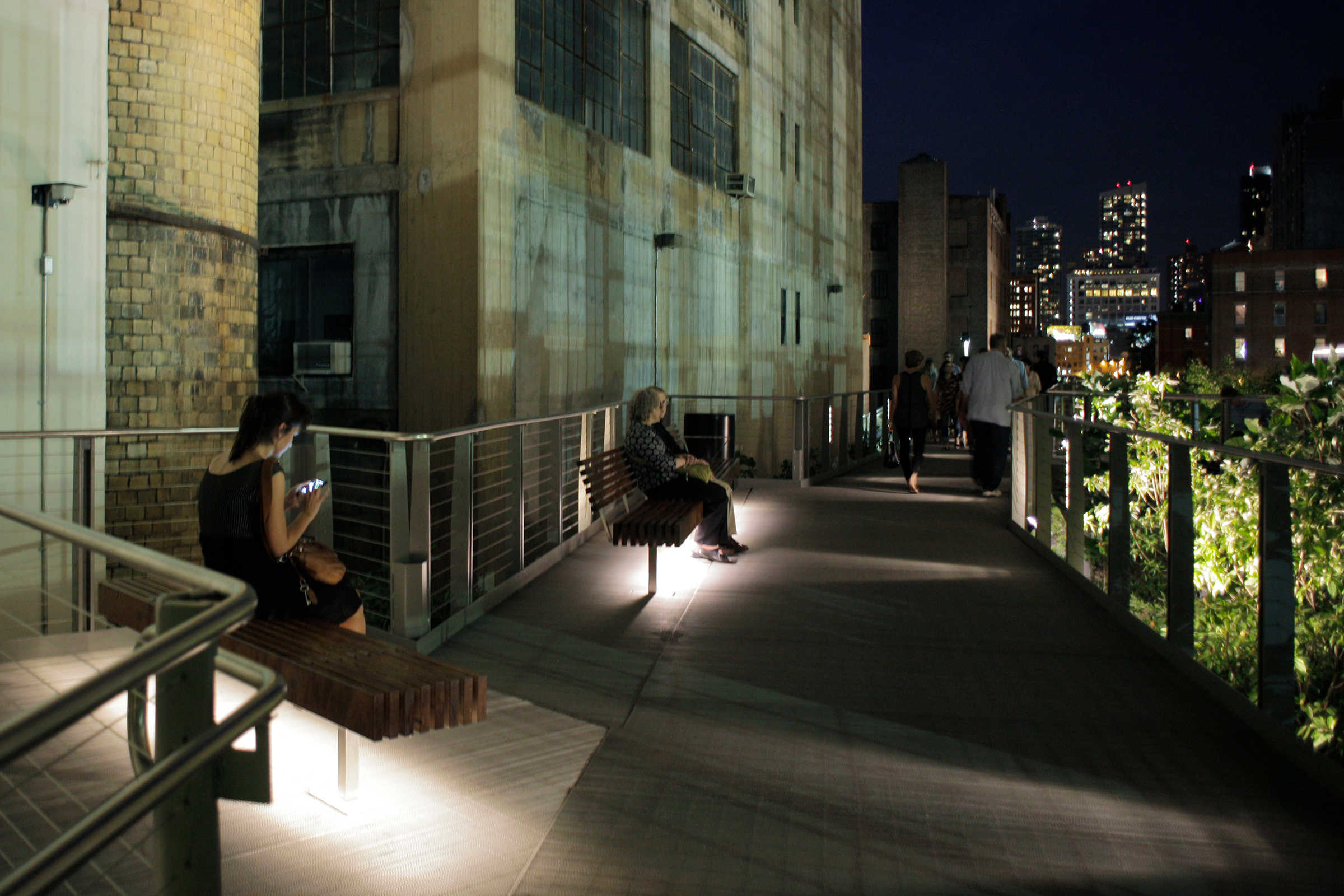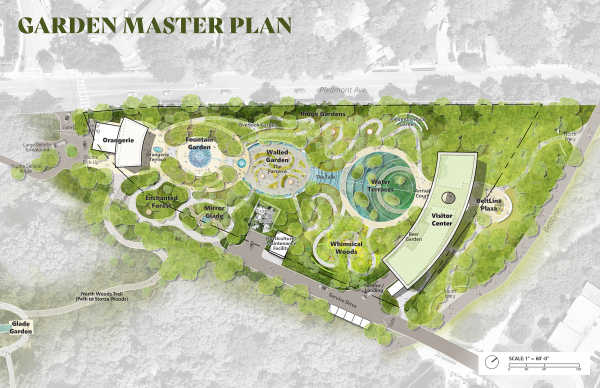The soft light marks the edge and silhouettes the High Line for viewers from the street, while creating a unique night walk experience along the highline itself
The High Line was built in the 1930s to eliminate dangerous street-level railroad crossings. Since the last train ran on the Highline in 1980, an opportunistic landscape of early successional species has begun to grow. The High Line is now recognized as an important and distinctive asset to the city. Inspired by the melancholic, “found” beauty of the High Line, the design team aims to re-fit this industrial conveyance into a post-industrial instrument of leisure. The singular linear experience of the new High Line landscape is marked by slowness, distraction and an other-worldliness that preserves the strange, wild character of the High Line.
The overall lighting strategy is a consistent low-level plane of light along the perimeter, lifting and floating the High Line above the city below. This soft light marks the edge and silhouettes the High Line for viewers from the street, while creating a unique night walk experience along the highline itself. All light sources were kept at or below eye level, thereby avoiding any glare or obstruction of the night sky and the vistas all around, and keeping the High Line safe, visible, and unobtrusive at night.
Opening of Section 1 (2009), Section 2 (2011), Section 3 (2014), Section 4 (2018) , The Spur (2019).
Architect
Diller, Scofidio + RenfroLandscape Architect
James Corner Field OperationsPlanting Design
Piet OudolfSize
17,000,000 ft2 / 1,579,300 m2
Status
CompletedDate Completed
2019
Awards
Client
Principal
Project Leader
Jason Neches
Natalia Priwin
Team
Photo Credit
Halkin Mason Photography
Iwan Baan
Studio Dubuisson
Eric Laignel


